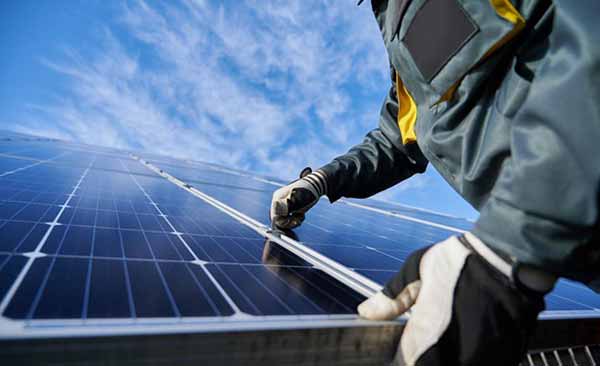The United States’ largest urban solar farm to be built on an old landfill site has been given the green light in Texas.
Residents in Sunnyside, south Houston, could soon be using clean electricity from solar panels on a site that once housed the city’s largest garbage incinerator. The Sunnyside Solar Farm in the historically Black neighborhood will sit on a 240-acre former landfill that has been dormant for more than 50 years.
How Will the Sunnyside Community Benefit From Solar?
Between 5,000 and 10,000 homes will eventually receive electricity from hundreds of thousands of solar panels at Sunnyside. The 50-megawatt setup will feature a 2-megawatt solar array to benefit the community. The Sunnyside solar panels are slated to break ground in July 2023.
Locals can invest in the solar farm, while businesses can get lower bills by agreeing to take power from Sunnyside. Residents also hope to benefit from reduced energy bills and help with home solar panel installation costs.
Fewer Carbon Emissions Promised
The Sunnyside landfill opened in the 1930s and closed in 1976, and the site on Bellfort Street has sat dormant for more than five decades. In the 1960s, it claimed the life of a local 11-year-old in a tragic incident.
Sunnyside is currently covered in trees and bushes but has leaked methane, heavy metals, and strong garbage smells into the atmosphere since its closure. A solution wasn’t forthcoming — until now.
City of Houston officials say the completed site will be the largest urban solar farm in the nation to be built on a landfill. The council estimates Sunnyside will remove around 120 million pounds of carbon from the air annually.
Funding to Help Create Jobs and Training
The Sunnyside development is expected to cost around $70 million in total.
The project has also received $750,000 in federal funds for the EmPowering Solar Jobs Program to help create local jobs. The money will allow Houstonians to train as certified installers, maintenance technicians, and constructors of solar panels. The council estimates 100 jobs will be created and fund up to 175 placements for students.
Houston Mayor Sylvester Turner said: “I am optimistic about the future of this land and the people who live in the resilient neighborhood that developed around this environmental injustice.
“Most importantly, it will transform the built environment of a historically under-served and under-resourced community by bringing private investment to Sunnyside, a predominantly Black and brown community that struggles daily with historical inequities that have created present-day disparities.”
Solar Taking Off in the United States and Texas
Solar-produced electricity is on the rise in the United States. In 2018, the country produced just under 64 billion kilowatt-hours (kWh) of electricity via solar. By 2021, solar’s contribution had almost doubled to just under 115 billion kWh, nearly 3% of the nation’s total electricity generation.
Texas is one of the country’s solar powerhouses, producing 14 billion kWh of electricity in 2021, quadrupling in three years, up from 3 billion kWh in 2018. The only state to produce more solar-based electricity in 2021 was California, with some 34 billion kWh.
In 2020, around 20% of Texas’ electricity came from renewable energy sources. The state leads the nation in energy generation and consumption.
Micro Solar Projects Complement Utility-Scale Farms
Houston’s Sunnyside project is a prime example of how communities, government, and businesses can work together to redevelop sites and follow a green and clean energy agenda. Small-scale projects are vital in the battle against climate change and reducing greenhouse gas emissions, with positive impacts for the residents such as improved air quality and lower energy bills.
More significant utility-scale developments will have a more dramatic effect on the numbers. The U.S. Energy Information Administration (EIA) predicts the United States will produce 20% of its electricity from solar by 2050, with the country experiencing a boom in solar installations.
This combined micro and macro approach to clean energy gives hope that we can contribute to the solution and avoid the worst effects of climate change, no matter where we live.
Opinion writer: Tom Shearman
The opinions, beliefs, and viewpoints expressed by the various authors do not necessarily reflect the opinions, beliefs, or viewpoints of Interactive Energy Group, LLC (IEG) or its parent companies or affiliates and may have been created by a third party contracted by IEG. Any content provided by the bloggers or authors are of their opinion and are not intended to malign any individual, organization, company, group, or anyone or anything.
Brought to you by energysavings.com
All images licensed from Adobe Stock.
Featured Image

